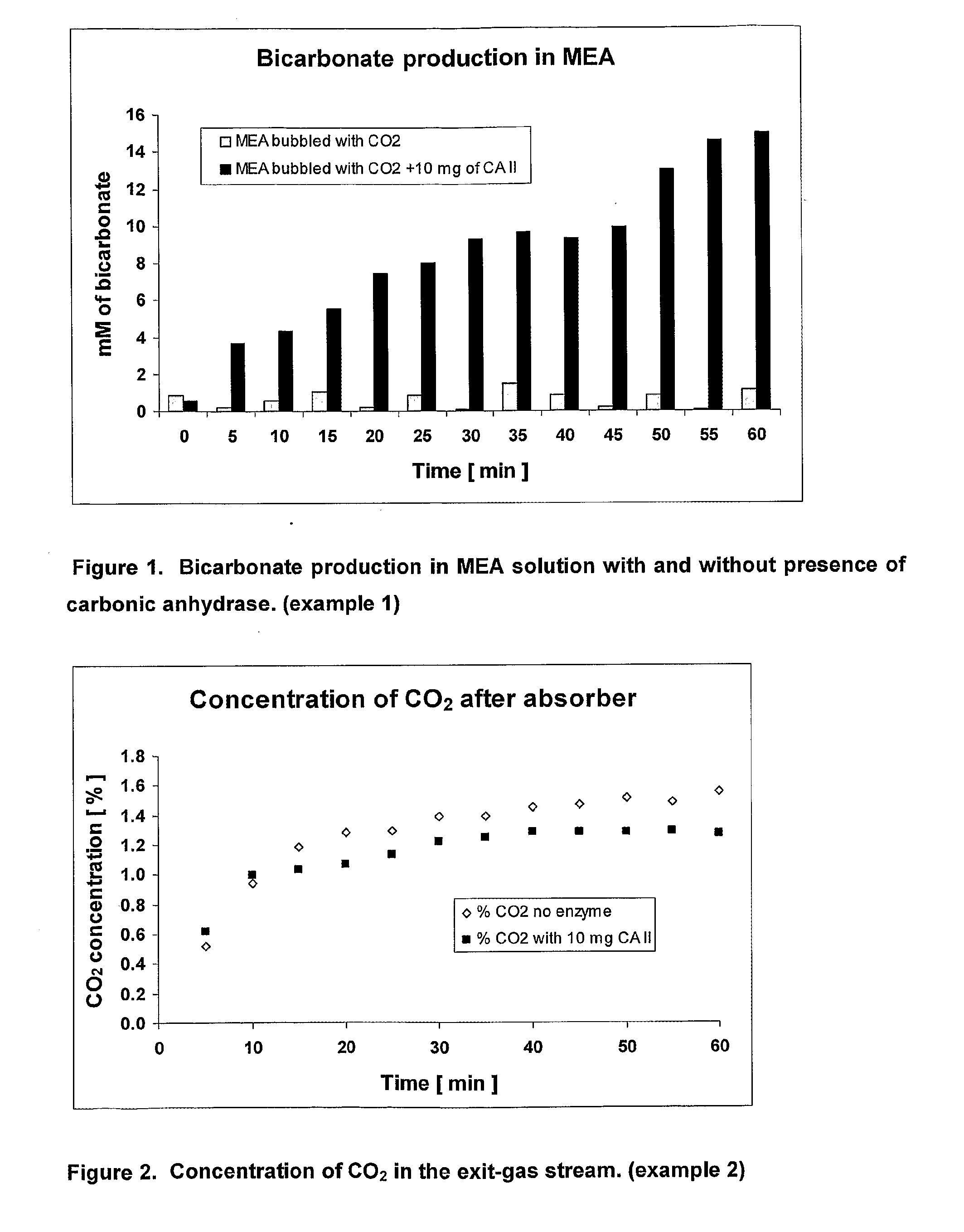Use of enzyme catalysts in co2 pcc processes
a technology of enzyme catalysts and co2 pcc, which is applied in the direction of carbonate/bicarbonate preparation, separation process, products, etc., can solve the problems of relatively high co2 pcc partial pressure, relatively high step energy consumption, and reduce the electrical power output by around 20%. , to achieve the effect of energy cost of a downstream desorption step
- Summary
- Abstract
- Description
- Claims
- Application Information
AI Technical Summary
Benefits of technology
Problems solved by technology
Method used
Image
Examples
example 2
Bicarbonate Production in Mea Solution with and without a Biocatalyst
[0041]50 mL of freshly prepared 0.5 M monoethanolamine (MEA) solution in D2O was poured into a 125 mL Dreschel bottle and 80 μL of the solution was taken as a zero time sample (control). 100 mL min−1 of 2% CO2 in 98% N2 was bubbled into the stirred solution through the sintered glass outlet via a silicon tube in the bottle head. A subsample of the solution (80 μL) was taken every 5 minutes and the IR absorbance was immediately measured between 1300 to 1700 cm−1. The bicarbonate peak at 1630 cm−1 was used as it was free of background noise. The area under the peak at 1630 cm−1 was calculated for each sample to provide the concentration of bicarbonate over a period of 60 minutes. The experiment was repeated under the same conditions in the presence of 10 mg of carbonic anhydrase (CA II). The results are shown in FIG. 1.
[0042]The concentration of bicarbonate produced in the MEA solution without enzyme was less than 2 ...
PUM
| Property | Measurement | Unit |
|---|---|---|
| energy | aaaaa | aaaaa |
| temperature | aaaaa | aaaaa |
| aliphatic | aaaaa | aaaaa |
Abstract
Description
Claims
Application Information
 Login to View More
Login to View More - R&D
- Intellectual Property
- Life Sciences
- Materials
- Tech Scout
- Unparalleled Data Quality
- Higher Quality Content
- 60% Fewer Hallucinations
Browse by: Latest US Patents, China's latest patents, Technical Efficacy Thesaurus, Application Domain, Technology Topic, Popular Technical Reports.
© 2025 PatSnap. All rights reserved.Legal|Privacy policy|Modern Slavery Act Transparency Statement|Sitemap|About US| Contact US: help@patsnap.com


